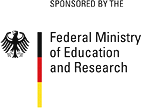Water Distribution as Indicator of Social Inequality: The Case of Medellín, Colombia
In Latin America, one of the countries most severely affected by the uneven distribution of water resources is Colombia, where almost 30 per cent of the population has no access to this vital source, despite the country’s water wealth. This research addresses the phenomenon of water distribution in Medellín, Colombia’s second biggest city. Medellín is an ideal case to examine due to the fact that the appropriation of water resources in both urban and rural areas has become one of the greatest sources of social and environmental conflicts while international actors are becoming significant contributors to this new emerging situation. Since 2004, the city has reported a rapid growth of desconectados (people disconnected from water supply) in the poorest neighborhoods as a result of the exorbitant increase in the water tariffs. One of the main causes of this problem is the accelerated process of modernization and expansion carried out by Colombia's largest public utility company - Empresas Públicas de Medellín (EPM), in order to increase its competitiveness in the international market. Additionally, the involvement of the private sector in water distribution in rural areas represents a threat to traditional forms of water supply managed by acueductos comunitarios (water-user associations). This research explores to what extend transregional interdependencies in the water sector intensify the already existing social inequalities in Medellín. Furthermore, it identifies environmental risks and costs emerging as a consequence of uneven access to water resources, and how they are distributed between different social groups.
